- Expensive vs. Cheap – The Differences in Buying
- Types of Available PC Monitors
- Important Equipment Features
- Important Manufacturers
- What Is HDR and Is the Feature Worth It?
- This Is What Counts When Buying Gaming Monitors
- 3D Monitors – Technology, Tricks, and Traps
- Possible Problems With PC Monitors
- Frequently Asked Questions (FAQ)
If you can read this article, you probably own one: A PC monitor. But maybe you are holding a cell phone in your hand right now. Or you want to buy an external screen for your laptop. Or finally, replace your old one with a fancy new one. In any case, the situation is favorable. PC monitors are powerful, inexpensive, and bring PC owners one of the fastest and clearest improvements for their money.
1. Expensive vs. Cheap – The Differences in Buying
There are hardly any monitors smaller than 22 inches and lower than Full HD resolution. A few years ago, these were strong values, today PC monitors with these features are sold at a discount. So why even get much information? Why not just buy the cheapest one?
In fact, inexpensive entry-level models are entirely sufficient for many customers. But firstly, it is essential to make sure that even modest wishes are fulfilled. For example, there are misunderstandings about interfaces, and you can also save on power consumption in the long term. Secondly, we may not yet have any idea what is possible today because manufacturers find very creative reasons why we might want to spend more money after all.
2. Types of Available PC Monitors
A strict division of monitors into categories no longer makes sense. Individual characteristics can be worth it for a variety of reasons. The following headings can be found when shopping for monitors these days. What are they called?
- Gaming Monitors:
are monitors with a (hopefully) short reaction time. That is a critical factor in action games. The reaction time (also called “input lag“) determines how much time passes between a mouse click and the visible reaction on the screen. Gaming monitors often perform particularly well and cost a little more, so they may offer better panel technologies, chic design, excellent workmanship or more interfaces than usual. In point 5, we will look more closely at the 4K monitors. - 4K Monitors:
are monitors with extra high 4K resolution, which usually means 3840 x 2160 pixels. That is four times as many as with the current Full HD resolution! The result is a crisp image, even with large displays and short viewing distances. But be careful: 4K monitors are not only expensive, but they also require a computer with high graphics performance and consume significantly more power. In point 6, we will look more closely at the 4K monitors. - 3D Monitors:
 can display stereoscopic 3D images. This is almost always done with special viewing glasses, just as 3D televisions do. 3D monitors usually have a high frame rate, which they need for the so-called “Active 3D”. Thus, they also place high demands on the PC. 3D monitors are aimed almost exclusively at gamers and therefore often come with corresponding features.
can display stereoscopic 3D images. This is almost always done with special viewing glasses, just as 3D televisions do. 3D monitors usually have a high frame rate, which they need for the so-called “Active 3D”. Thus, they also place high demands on the PC. 3D monitors are aimed almost exclusively at gamers and therefore often come with corresponding features. - Curved Monitors:
are screens with a curved surface. In this way, screens take up the trend that even large televisions in the high-end segment have been setting for a few years. Curved monitors look very chic. However, a large “IMAX effect” does not occur with the small scales of a screen. Only people who have the money to spare buy these products. - Office Monitors:
are, frankly, screens of all kinds. The term is not always well defined. If you want a screen for use in the office, you should pay particular attention to unique ergonomic features, the 16:10 format, low power consumption, and a good product warranty.
3. Important Equipment Features
You often can’t tell at first glance what a screen actually does. On the second one, however, you will find the data sheet. The data sheet rarely lies, but it is difficult to understand. Here is our translation guide.
3.1 Size
It is usually given as screen diagonal in inches or centimeters. One inch is about 2.5 centimeters. At a typical seating distance, 22 to 24-inch screens are large enough for anything but cinema use unless you need to display different contents side by side. In this case, you should consider buying a larger monitor.
3.2 Picture Format
As with televisions, 16:9 has become the standard in this respect. Occasionally you may find 16:10, which is good for working with documents. There are also 21:9 screens available. They are great for secretly watching movies at work without black bars – or for displaying a lot of documents at once.
3.3 Resolution
Full HD is the natural minimum today. 21:9 screens have a width of over 2500 pixels, which creates space. 4K monitors have a sharper picture, but they also need more power.
3.4 Panel
TN panel monitors are still widespread and better than their reputation. They practically can be found in all cheap screens, are quick to respond, but lose a lot of image quality at sharp viewing angles. For this reason, graphics and photo professionals swear on IPS panel monitors, which are more expensive and slower. Monitors with MVA panels are particularly good and expensive.
3.5 Contrast
Be careful! You can only compare static or typical contrast values. However, the datasheet often only shows the “dynamic contrast” and each manufacturer determines this differently in order to obtain more spectacular numbers. Unfortunately, only independent expert tests can provide truly comparable results.
3.6 Brightness
More is generally better, but it strongly depends on the location of use. Comparatively dark screens are also suitable under normal office conditions and without a light source in the back. Too much light is also tiring for the eyes. 250 candelas per square meter are sufficient in most cases.
3.7 Ergonomics
If you do not want to place the monitor on a stack of books, you should look specifically for height-adjustable monitors. These can be found primarily in the professional and office segment. Screens with “pivot” function can also be turned upright, which leads to wonderful aha-effects for specific areas of application (layout, text work, programming).
3.8 Interfaces
Not sexy, but important are the connections at the back of the screen. An HDMI input is standard, but also DVI is still used on many PCs. Display port interfaces are mainly used in the professional segment. Additional interfaces (including a headphone output!) on the side offer convenience. Some even have a USB hub built into the case. This saves cable clutter and trips under the desk.
You will notice: Before you buy, you should know what you want to use the screen for. And since the prices are low, it can be very worthwhile to invest a few euros for specific functions. After all, most people spend a lot of time in front of their screen. If you buy a pale, unergonomic power guzzler, you have saved on the wrong thing.
4. Important Manufacturers
4.1 Acer
Acer is a Taiwanese company that also operates on the market under brands such as “Packard Bell” or “AU Optronics.” The company’s products, especially those from the Predator series, are particularly suitable for gaming and offer an excellent price/performance ratio.
4.2 AOC
AOC is known for LED monitors with high-quality Full HD resolution and very high contrast values. Some of them are ergonomically adjustable and often perform very well in colour display and illumination tests.

4.3 BenQ
BenQ plays in the top class of monitor manufacturers and is often among the top rankings. The focus is set on LED monitors in full HD resolution.
4.4 Dell
Dell offers the right price/performance ratio for beginners, frequent users and gamers alike. They are characterized by high energy efficiency and individual adaptability and are often also used in the commercial sector.
4.5 Eizo
Eizo stands for high-performance monitors in the upper price category and is one of the top brands in the LCD and TFT monitor segment. They have also recently launched LED monitors.
5. What Is HDR and Is the Feature Worth It?
HDR stands for High Dynamic Range and thus not only stands for a higher or “better” resolution but also promises an entirely innovative viewing experience. The so-called contrast range is essential for image perception. Humans can detect contrast ranges of up to 1:1,000,000 – a range that cannot be reproduced even by products of the latest design. What people see in reality is therefore brilliant and clear, which is not the case with monitors of classic design, for example.
HDR promises a much larger contrast range but cannot be displayed on any monitor or printout. It is, therefore, a technical innovation that has practically no particular relevance. Interested buyers should therefore not trust purchase arguments in this respect.
6. This Is What Counts When Buying Gaming Monitors
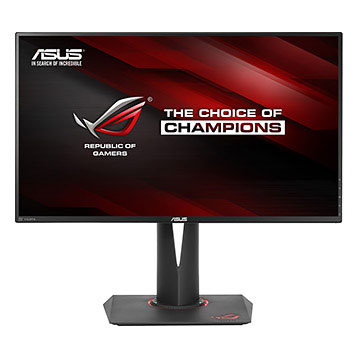
Nobody goes into the store and wants to buy a lousy monitor. It means nothing when high demands are placed on gaming monitors. However, if you look closely, computer games make extraordinary demands on monitors. And every player has different requirements. We will reveal here what these are and what is really important.
6.1 The Right Size and Resolution
A large screen is better. That is not only true for games. You can also recognize text and tables better, put two browser windows next to each other and enjoy a much better overview. However, gaming monitors are always much bigger. 24-inch is now considered the entry-level size. 30 inches and more are certainly available. Especially when you are close to your PC, bigger isn’t always better. Players should have a relaxed view of the edges of the screen.
The resolution is directly connected to the size. Full HD was once a seal of quality – today even cheap entry-level monitors offer a resolution of 1920 x 1080 pixel. Higher resolutions up to 4K are possible, and they then show particularly crisp images, even at 30 inches. However, there’s a little trap: Most gamers are better off with Full HD. To display modern games with high details fluently in 4K, you also need two high-end graphics cards, depending on the title. That is expensive, and so are 4K monitors. Only wealthy gamers with a large budget have the option of 4K monitors. Because Full HD graphics also look better on a Full HD display than on a 4K display.
6.2 Input Lag and Refresh Rate
The input lag is an oft-mentioned but rarely understood value. It indicates how long it takes from the keystroke to the visible result of the input on the screen. It is not just the monitor that decides how long it takes. All hardware and software components used can affect this. Only independent, comparative expert tests are really trustworthy when evaluating the lag. All other information is circumstantial at best. In general, the smaller the measured value, the better.
The refresh rate also plays a specific role. Virtually every modern monitor displays images with at least 60 Hertz, i.e., 60 frames per second. If the graphics card also delivers this, the result looks very fluid. However, the ultimate in fast racing and action games are 120 Hertz screens. They are also better at preventing the dreaded screen tearing effect in some players. But even 120 Hertz are rather expensive. A 60 hertz LCD with low input lag is sufficient for most gamers.
6.3 Important Interfaces
One HDMI connection and you’re done? Not quite. Although almost every modern monitor has an HDMI port, there are still graphics cards with a DVI connection in circulation. And more and more screens have several video inputs. That makes sense. Because there is an increasing number of other application areas. You can also connect game consoles, set-top boxes and Blu-ray players to the ever-larger monitors. More and more suitable inputs do not have to make the monitor much more expensive.
If you do not have a surround sound system for your PC, you may be happy about headphone connections that also connect to stereo speakers. A USB hub or port in the monitor can also prevent cable clutter. These connections are certainly not a must, but they do not mean a significant surcharge anymore. The connection may be the deciding factor in similarly good monitors.
6.4 Conclusion
PC games are an incredibly versatile medium. In the past, players had to be careful not to pick up a small, pale, dull monitor. Today the situation is much simpler. Large image sizes, widescreen, and Full HD have become a matter of course. Most games are actually covered by this. If you do not play action-packed games at a high level, you do not need expensive hardware. Adventures, strategy and indie titles look good on almost every current screen.
If, on the other hand, you have an impressive budget, you can dare to take an exciting look into the future. If the PC is equipped with a powerful processor and a massive graphics card, then you can enjoy very high resolutions and frame rates these days. And since the launch of the new Xbox One and PlayStation 4 game consoles, there have been more games that are making real technical progress. Exciting times have begun for high-end gamers with powerful PCs.
7. 3D Monitors – Technology, Tricks, and Traps
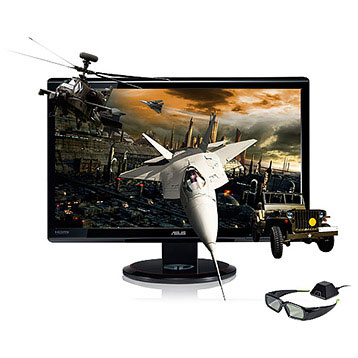
Who is still interested in 3D? Many people are. Although the great hype of technology has come and gone, the technology is still there. Various screens with 3D technology are available. But, which one should you buy? What do you have to pay attention to? We summarize the most important things.
7.1 Gaming Demands on 3D Monitors
If you look around online, you will quickly read about superlatives. This requires at least 27 inches image size and screens with the latest technology, plus a strong graphics card. Otherwise, everything is terrible. Is that true? Not quite. It is usually only true if you are a hardcore PC gamer with an eye for detail. If you notice even slight ghosting (double images) or slight jerking, then you should consistently look for the best available model and also accept higher prices.
If you mainly want to see video and pictures in 3D, perhaps also play stereoscopically from time to time, then you can also enter one level lower. In this case, you might consider screens that use polarization instead of shutter technology.
7.2 3D – Active or Passive?
Wait a minute: What is polarization? What is shutter technology? It’ very simple: polarization is also referred to as passive 3D technology. You put on light glasses with polarizing filters, just like in the cinema. The 3D effect is relatively pleasant, the picture quite smooth. However, the technology is only implemented on 3D screens in such a way that the resolution is effectively halved. This is not a simple effect but is clearly noticeable in most games.
So, if you want smooth, sharp images when playing, you end up with shutter technology. In this case, the 3D glasses are a little heavier and have a battery. They cover the left and right eye in quick alternation so that the screen can alternatively show the left and right image. The frame rate is halved, not the resolution. And this disadvantage is solvable: there are monitors with 120 Hertz (and even higher frame rates) instead of the usual 60. If the graphics card has enough power, the game can run at 120 frames per second, and each eye can still see 60 frames per second even in 3D mode.
7.3 Panel Technology and Nvidia Support
High frame rate screens usually have a TN panel. However, this is not usually written on the package, as TN panels are standard for monitors. Customers must, therefore, be more careful not to buy a DCS or IPS monitor. Although they have better image quality, they also cost more, but as a rule, they cannot do active 3D – they cannot cope with the high frame rate.
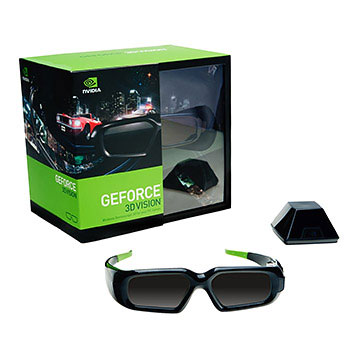
An important detail should be on the package or data sheet: Nvidia 3D Vision. The technology is the de facto standard for 3D gaming. Competing technologies such as TriDef are far off and do not have such broad support. In general, the Nvidia-compatible monitor will have 120 or 144 Hertz. Samsung and Asus are the most prominent manufacturers of monitors with Nvidia support.
7.4 Can 3D Be Retrofitted?
Yes! Gamers, in particular, have good reasons to buy a 120 Hertz monitor even if they are not playing in 3D. The picture becomes even smoother, and the input lag even shorter when games run in 2D and 120 Hertz. That is why this is an insider tip especially for skeptics: buy a gaming monitor with 120 Hertz and Nvidia 3D vision support, but without the glasses and infrared transmitter set. That saves money first, and on occasion, you can still see if you like 3D.
If you already know that you really want 3D, take a model that includes glasses. But a self-test should be a must – even if you know and love 3D in the cinema. Because the effects with shutter glasses feel a little different than the cinema glasses.
7.5 Conclusion
At the time of the 3D hype, it was difficult to buy a good monitor. All kinds of things were advertised as 3D; many requirements were missing. The situation has improved today. For example, there are hardly any 3D monitors left that cannot be connected to a 3D-capable Blu-ray player. HDMI ports of the corresponding standard are widely used. And 3D does not mean a significant surcharge anymore. So if you are curious, you should have a look.
8. Possible Problems With PC Monitors
8.1 Flickering
Flickering disturbs eyes and mind and focusing is no longer possible. The reason for this should be clearly identified. We recommend a) replacing the monitor cable (HDMI or DVI) to explicitly exclude a defect (keyword “loose contact”), b) connecting the monitor to another device to see if this may not be the source of the error, or c) checking the software, possibly due to a lack of compatibility, a defective driver or similar.
8.2 Ghosting
Ghosting displays a much weaker, very poorly lit image. This occurs mainly with analog receiving monitors and is related to the fact that a third object is reflected between the transmitter and receiver, which causes the image error. This is not possible with technologies such as DVB-T, DVB-S or DVB-C due to their systematic approach.
One of the few options is to select, reduce or disable the monitor’s power saving option to promote a renewal (update) of the liquid crystals in the monitor.
8.3 Pixel Error
Pixel errors are quite often known to users of TFT monitors; they are pixels that are displayed incorrectly. If the fault occurs within the warranty window, we recommend contacting the manufacturer. Depending on the extent of the pixel errors, it should then be no problem to obtain a product in mint condition. However, before this happens, it is recommended to integrate so-called test patterns. You can usually find these test patterns on the manufacturers’ websites.
Tip: Try software such as DPT (Dead Pixel Tester) if necessary.
9. Frequently Asked Questions (FAQ)
PC Monitor for Image Processing – What Should I Pay Attention To?
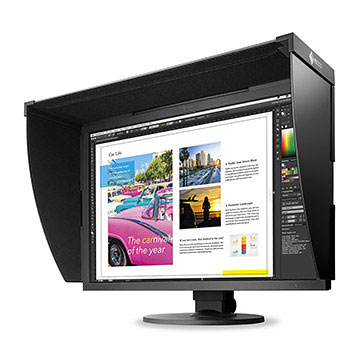
The demands are high; especially the colour spectrum is an essential component when selecting a monitor for graphic artists and photographers. A particularly true-colour display is not sufficient; it should instead cover the AdobeRGB colour spectrum.
Standard monitors are very well suited for the sRGB colour spectrum; this is an established standard. AdobeRGB, on the other hand, is only covered by about 2/3 of all commercially available monitors – there is a risk of colour shifts and colour distortions. Other important factors include a high viewing angle stability through IPS technology and minimum brightness of 250 candelas per square meter. The risk of distortion can be reduced by regular calibration.
Can I Use a PC Monitor as a TV?
Of course, this is no problem, especially with PC monitors with TV tuners, which usually have integrated speakers. The receiver can be connected to the monitor if the same connections are used. An HDMI cable is ideal for this. VGA cables usually require an adapter or another receiver, as these do not have this compatibility as standard.
Alternatively, a TV card can be installed in the PC, which can otherwise also be connected as a DVB-T stick via USB. If necessary, additional loudspeakers may be required.
How Can I Adjust the Monitor to Protect My Eyes?
Working on the PC for hours does not have a positive effect on the eyes. Depending on the manufacturer, there are preset settings that can be activated as required. Important are very high contrast, the avoidance of too bright colour settings, and sharpness that clearly displays images and characters. Depending on the type of monitor, transparencies can help prevent reflections.
Also, pay attention to the TCO seal of approval. TCO5 and TCO6 ensure that appropriate settings are possible. In addition, you should check how far away from the screen it is still possible to work comfortably.
What Is the Optimal Viewing Angle When Looking at the Monitor?
When looking at the angle, we first have to consider the two values of the so-called viewing angle. “V” stands for vertical, “H” for horizontal. The V-value indicates up to which value the image can still be sufficiently viewed on the monitor. The higher the values, the better. Modern LED monitors have better values than old TFT or LCD screens.
What Is the Difference Between TFT and LCD Monitors?
LCD stands for “Liquid Crystal Display” and represents all monitors based on liquid crystals. TFT stands for “Thin Film Transistor” and is a modified LCD technology. Modern LCD monitors are all based on TFT technology.
Is Every PC Monitor Suitable for a Wall Mount?
Whether a PC monitor can be mounted on the wall depends on the VESA hole. VESA stands for “Video Electronics Standard Association,” this organization has developed a standard called FDMI, which shows whether and how a screen can be mounted on walls or ceilings. When we speak of VESA drilling, we are talking about the distance between the threaded holes on the back, expressed in millimeters. It is precisely these distance dimensions that are required for the bracket.
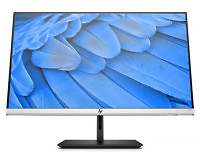
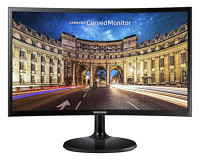
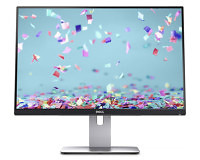
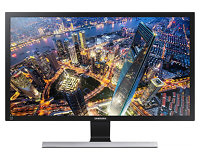
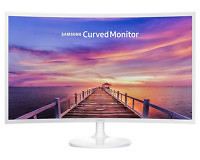
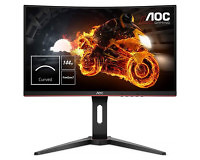
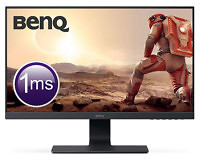
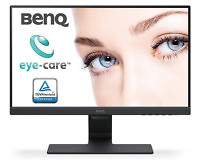
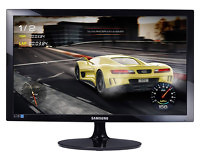
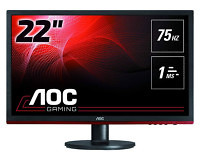
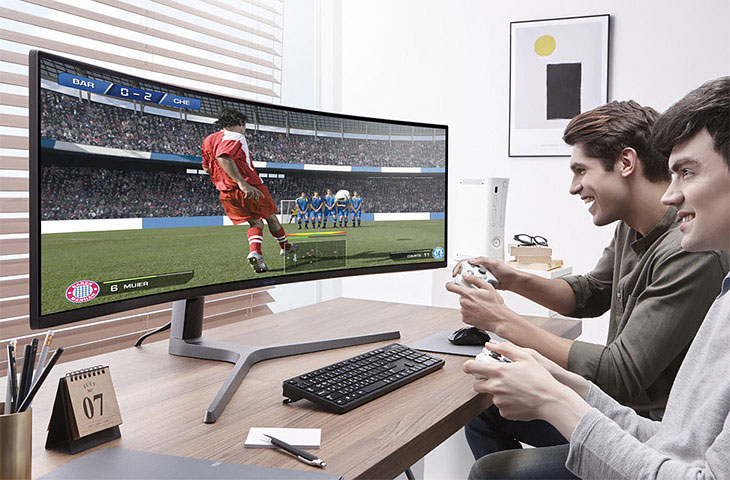
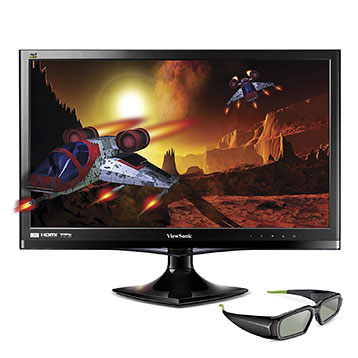 can display stereoscopic 3D images. This is almost always done with special viewing glasses, just as 3D televisions do. 3D monitors usually have a high frame rate, which they need for the so-called “Active 3D”. Thus, they also place high demands on the PC. 3D monitors are aimed almost exclusively at gamers and therefore often come with corresponding features.
can display stereoscopic 3D images. This is almost always done with special viewing glasses, just as 3D televisions do. 3D monitors usually have a high frame rate, which they need for the so-called “Active 3D”. Thus, they also place high demands on the PC. 3D monitors are aimed almost exclusively at gamers and therefore often come with corresponding features.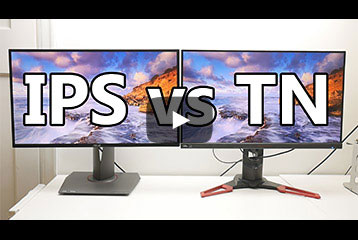

 (14)
(14)

